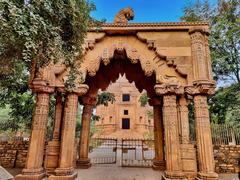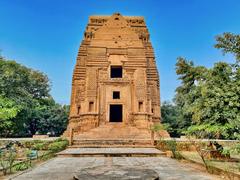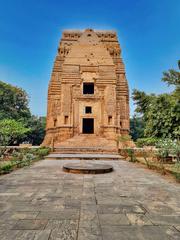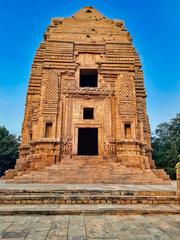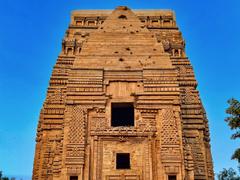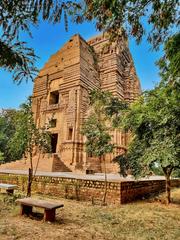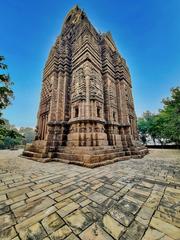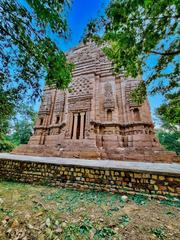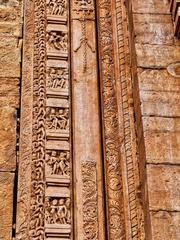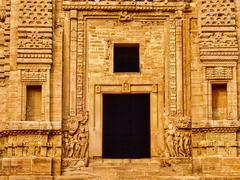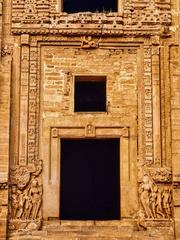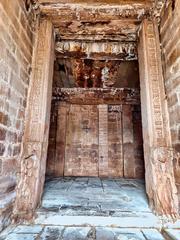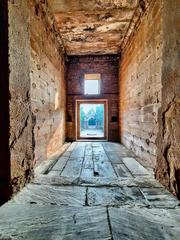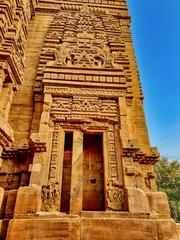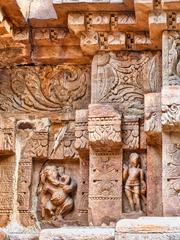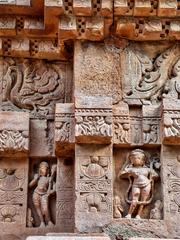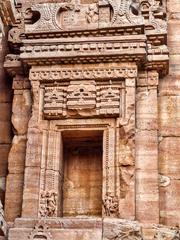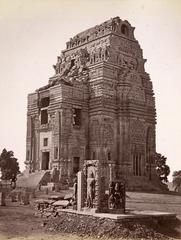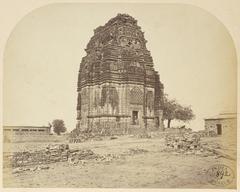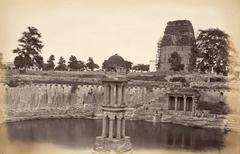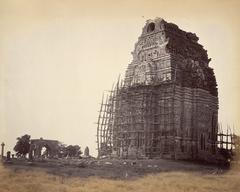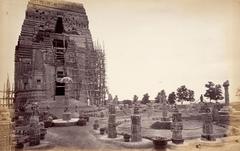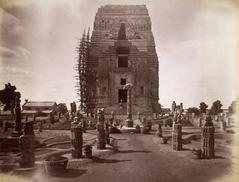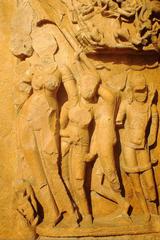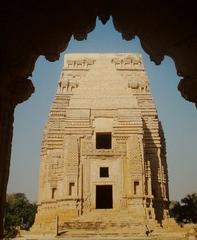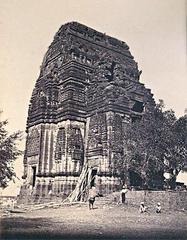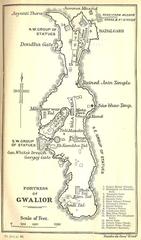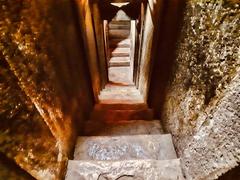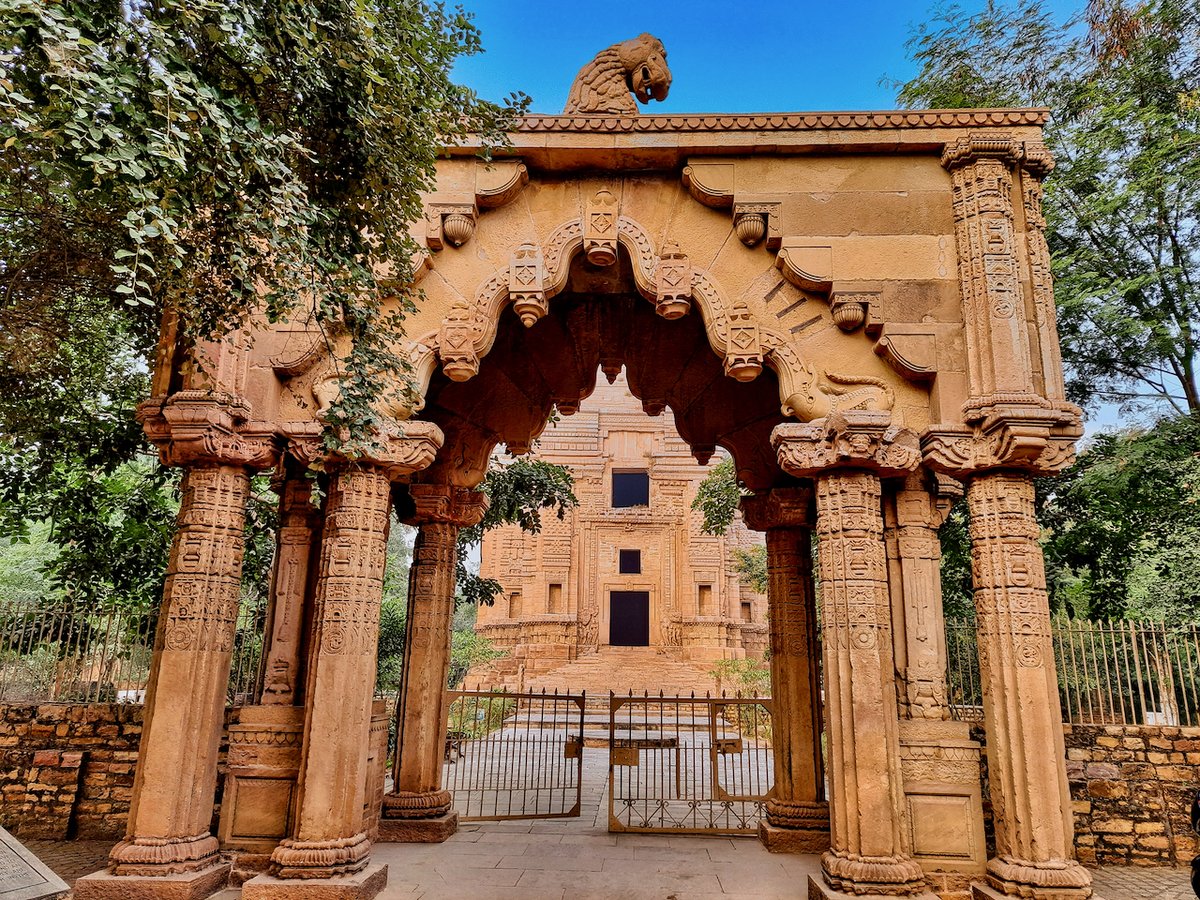
Teli Ka Temple Gwalior: Visiting Hours, Tickets, and Historical Significance
Date: 15/06/2025
Teli Ka Mandir, an architectural gem within the legendary Gwalior Fort in Madhya Pradesh, India, stands as a unique testament to early medieval Indian innovation, artistic excellence, and religious syncretism. This comprehensive guide details the temple’s history, architectural features, practical visitor information—including opening hours and ticketing—and addresses its ongoing conservation challenges. Whether you are a history enthusiast, architectural explorer, or a pilgrim, this resource will help you make the most of your visit to one of Gwalior’s most significant historical sites. (ASI, 2024; Madhya Pradesh Tourism; India OnGo)
Table of Contents
- Historical Background and Origins
- Architectural Innovation and Influence
- Religious and Cultural Importance
- Visiting Teli Ka Mandir: Hours, Tickets, and Tips
- Preservation Challenges and Conservation Efforts
- Essential Tips for Visitors
- Frequently Asked Questions (FAQ)
- Visuals and Resources
- Related Articles
- Summary and Travel Tips
- References
Historical Background and Origins
Construction and Dynastic Context
Teli Ka Mandir traces its origins to the late 8th or early 9th century CE, with most scholars attributing its construction to the Gurjara-Pratihara dynasty. This period marked significant advances in temple architecture and religious art throughout central and northern India. The temple’s presence within the ancient stronghold of Gwalior Fort (historically Gopagiri) underlines its strategic and cultural importance.
Etymology and Name
The name “Teli Ka Mandir” translates to “Oilman’s Temple.” Local legends attribute its construction to the Teli (oil merchant) community, while other theories link the name to Telang Brahmins or even the Telangana region, reflecting its architectural influences. Despite these varied theories, the temple’s unique synthesis of regional styles remains its most defining characteristic.
Religious Dedication
Originally, the temple showed evidence of both Vaishnavite (Vishnu) and Shaivite (Shiva) worship, as well as Shakta (Matrika) traditions. Its prominent Garuda carving above the main doorway suggests a Vaishnavite origin, though later modifications point to Shaivite associations. This fluid sectarian identity is emblematic of early medieval religious syncretism (ASI, 2024).
Architectural Innovation and Influence
Structural Layout and Style
Standing nearly 30 meters tall, Teli Ka Mandir is the highest structure within Gwalior Fort. Its rectangular sanctum departs from the more common square plan, and the imposing east-facing entrance sits atop a high plinth accessed by a grand staircase, offering panoramic views of the fort and city.
The temple fuses North Indian Nagara and South Indian Dravidian styles, notably through its barrel-vaulted (valabhī) shikhara, reminiscent of South Indian gopurams and Buddhist chaitya halls. The rhythmic repetition of horseshoe-shaped gavaksha motifs, elaborate door jambs, and ornate base moldings set the temple apart from other structures of its era.
Decorative Elements
Teli Ka Mandir’s exterior is adorned with intricate carvings:
- Gavaksha window motifs along the shikhara
- Garuda (emblem of Vishnu) above the doorway
- Sculpted panels of deities, floral scrolls, and mythological scenes
- Lotus petal moldings and guardian figures (dvarapalas) at entrances
The use of locally sourced sandstone and advanced masonry techniques enabled the creation of its monumental scale and durability.
Influence
Elements of Teli Ka Mandir’s design appear in subsequent temples across central and northern India, including the Mata-ka-Mandir at Naresar and the Vaithala temple at Bhubaneswar. Its architectural ambiguity has inspired scholarly debate and cross-regional comparisons, reinforcing its significance in the evolution of Indian temple architecture.
Religious and Cultural Importance
Teli Ka Mandir holds a special place in Gwalior’s identity. Its architectural syncretism and shifting sectarian affiliations reflect a vibrant multicultural history within the fort complex, which also houses Jain rock-cut sculptures and Sikh monuments (asocialnomad.com). The temple’s presence testifies to centuries of religious coexistence and creative exchange.
Today, Teli Ka Mandir is not only a protected monument under the Archaeological Survey of India but also a focal point for local heritage, community engagement, and responsible tourism (Madhya Pradesh Tourism; Ease India Trip).
Visiting Teli Ka Mandir: Hours, Tickets, and Tips
Location and Accessibility
The temple is located within Gwalior Fort, approximately 3 km from Gwalior Railway Station. The fort is accessible by auto-rickshaw, taxi, or bus from the city center. The approach involves uphill walking, and the temple itself is reached via steps on an elevated plinth (India OnGo).
Visiting Hours
- Temple Hours: 8:00 AM – 6:00 PM daily.
- Fort Complex: 8:00 AM – 6:00 PM, with some monuments open from 9:30 AM – 5:30 PM.
(Holidify; Optima Travels)
Tickets and Entry Fees
- Indian Nationals: ₹10–₹50 (temple/fort combined)
- Foreign Nationals: ₹200–₹250
- Camera Fee: ₹25 (for non-commercial photography)
- Light and Sound Show: ₹75 (fort)
- Tickets can be purchased online via ASI website or at the fort entrance.
(Madhya Pradesh Tourism; India OnGo)
Best Time to Visit
- Optimal Season: October–March (pleasant weather)
- Avoid: Summers (over 40°C) and monsoon season (July–September) due to heat and rainfall
- Photography: Early morning offers the best light and fewer crowds
(TravelSetu; Madhya Pradesh Tourism)
Accessibility and Facilities
- Mobility: Stairs to the plinth may challenge those with limited mobility; ramps are limited.
- Amenities: Basic facilities (restrooms, water) are available at the fort. Carry water and sun protection.
- Guided Tours: Local guides are available for historical and architectural context (Ease India Trip).
Nearby Attractions
- Man Singh Palace, Gujari Mahal, Sas-Bahu Temples
- Jain rock-cut sculptures, Sikh gurdwara
- Bateshwar and Naresar temple clusters in the region
Preservation Challenges and Conservation Efforts
Structural and Environmental Threats
- Weathering: Sandstone structure is vulnerable to rain, wind, and pollution, particularly during monsoons (Temple Yatri).
- Tourism Impact: High visitor numbers can accelerate floor and step wear; unregulated behavior (touching carvings, littering) damages delicate stonework (IJFMR).
- Urban Pressures: Encroachment and lack of zoning threaten the monument’s setting (IJFMR).
Conservation Initiatives
- ASI Oversight: The Archaeological Survey of India leads ongoing restoration, structural repairs, and cleaning (Navrang India).
- Community Participation: Local organizations and authorities promote responsible tourism and preservation awareness (Ease India Trip).
- Funding and Awareness: Conservation is challenged by resource constraints and limited public engagement (IJFMR).
- Digital Documentation: New projects aim to digitally record the temple’s details for study and preservation (Ease India Trip).
Essential Tips for Visitors
- Plan Ahead: Check current hours and ticket prices on the ASI or Madhya Pradesh Tourism sites.
- Dress Modestly: Respect the temple’s religious and cultural significance.
- Sustainability: Avoid touching carvings, minimize waste, and use designated bins.
- Support Conservation: Consider donating or participating in educational programs (Ease India Trip).
- Photography: Permitted, but flash should be avoided inside to protect artwork.
Frequently Asked Questions (FAQ)
Q1: What are Teli Ka Mandir’s visiting hours?
A1: Daily from 8:00 AM to 6:00 PM. (Holidify)
Q2: Is a ticket required? Where can I buy it?
A2: Yes, tickets are required and can be purchased online or at the fort’s entrance. (ASI, 2024)
Q3: Is photography allowed?
A3: Generally yes, but confirm on-site for any restrictions, especially during restoration.
Q4: What is the best season to visit?
A4: October–March, with late October to early February offering the most pleasant weather.
Q5: Are guided tours available?
A5: Yes, local guides offer historical and architectural insights.
Visuals and Resources
- Archaeological Survey of India – Gwalior Fort
- Madhya Pradesh Tourism – Gwalior Fort
- India OnGo – Gwalior Fort Travel Guide
- Temple Yatri – Teli Ka Mandir
- Ease India Trip – Heritage Temples
- IJFMR – Preservation Challenges
- Navrang India – Teli Ka Mandir Architecture
Images (add to your article for engagement and SEO):
Related Articles
Summary and Travel Tips
Teli Ka Mandir is a singular monument that embodies India’s rich traditions of religious diversity, architectural innovation, and historical continuity. Its combination of Nagara and Dravidian styles, monumental scale, and symbolic iconography offer invaluable insights into early medieval temple construction and the cultural milieu of the Gurjara-Pratihara era.
Travel Tips:
- Visit between October and March for optimal weather.
- Wear comfortable shoes for extensive walking within the fort.
- Hire a local guide for the best interpretative experience.
- Support conservation efforts by following site guidelines and considering donations.
For up-to-date information, always consult official platforms like ASI and Madhya Pradesh Tourism. Explore more with the Audiala app for curated guides and virtual tours.
References
- Archaeological Survey of India, 2024, Official Gwalior Fort Page
- Madhya Pradesh Tourism, 2024, Gwalior Fort Attractions
- India OnGo, 2024, Gwalior Fort Travel Guide
- Temple Yatri, 2024, Teli Ka Mandir Gwalior
- Ease India Trip, 2024, Heritage Temples and Forts in Gwalior
- IJFMR, 2023, Preservation Challenges in Indian Heritage Sites
- Navrang India, 2025, Teli Ka Mandir Architectural Overview
- asocialnomad.com’s guide
